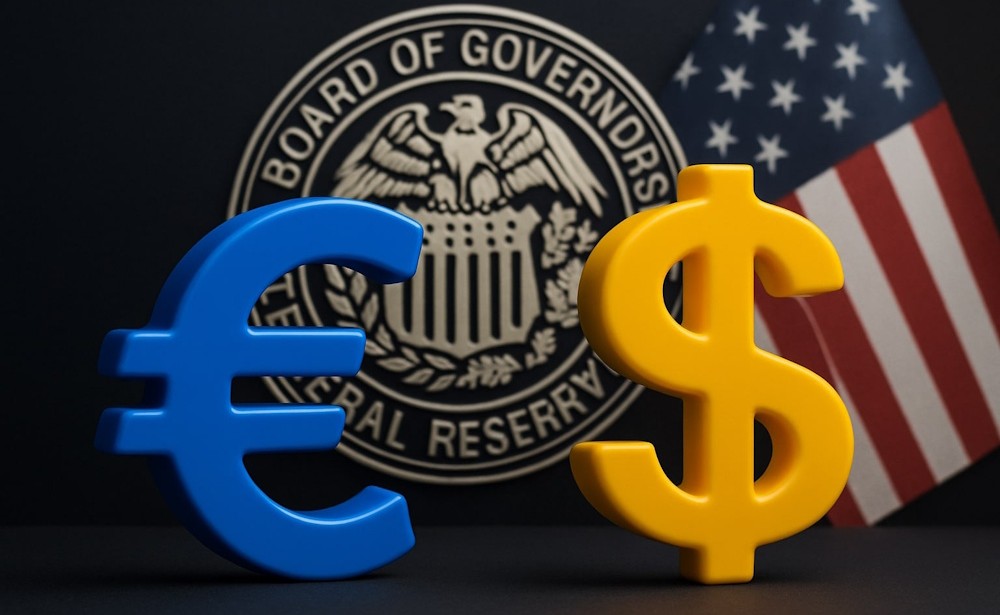The EUR/USD pair continued to gain momentum this week, rising as the U.S. Dollar Index fell to 98.10, marking its lowest point in four months. The euro’s ascent indicates a widespread adjustment in interest rate forecasts, as traders are currently anticipating two Federal Reserve rate reductions before the end of the year, amidst escalating economic and political uncertainty in Washington. The ongoing U.S. government shutdown, now reaching its 16th day, has postponed important macroeconomic releases and heightened worries regarding fiscal oversight, while the dovish stance of Fed officials has bolstered the euro’s movement toward the 1.1780 target area. The dollar’s underperformance continues to be the primary driver of the euro’s rebound. The most recent Beige Book pointed out a decline in consumer spending and an increase in layoff risks, leading policymakers like Governor Christopher Waller and Stephen Miran to indicate their willingness to consider additional easing measures. The DXY’s breach of the 98.68 support level, which has now turned into resistance, highlighted the increasing downside momentum. With the index trading around 98.00, close to oversold territory on the RSI, a slight rebound might take place before new selling begins, but the overall trend remains negative while below the 50-day and 200-day EMAs.
This policy backdrop stands in stark contrast to Europe’s improving tone. The European Central Bank is currently on hold following a series of tightening cycles, which has led to a stabilization of eurozone yields. The German 10-year bund yield at approximately 2.24% and France’s OATs close to 2.85% indicate a measured optimism regarding the euro area’s potential for a soft landing. Consequently, rate differentials are closing in favor of the euro, enhancing the upward movement of EUR/USD. EUR/USD has technically broken decisively above its descending channel, closing near 1.1706, marking its highest level in three weeks. The pair’s position above both the 50-day EMA (1.1647) and 200-day EMA (1.1665) indicates a shift in momentum towards a sustained recovery. Momentum oscillators indicate heightened readings, with RSI near 72, pointing to short-term overbought conditions, though exhaustion has not yet been reached. If the price remains above 1.1670, resistance is anticipated at 1.1778, and subsequently at 1.1838, where historical supply aligns with the upper Bollinger band.
Short-term pullbacks toward 1.1660 may attract dip-buying interest, provided the overall trend stays positive. A failure to defend 1.1630 would risk returning the pair to a sideways structure between 1.1575 and 1.1620; however, that scenario currently holds limited probability given the dovish U.S. backdrop. The current U.S. government shutdown, now the second longest on record, has redirected market concerns from Europe to Washington. Ten failed Senate votes on a funding bill have resulted in a standstill for federal operations, creating new fiscal uncertainty. Although it hasn’t reached a critical point, the shutdown poses a risk of dampening Q4 GDP growth by 0.3–0.4 percentage points, based on initial estimates, which strengthens the anticipation of rate cuts.
In contrast, the eurozone has demonstrated initial indications of stabilization. Germany’s industrial production increased by 0.4% month-on-month, and Italy’s services PMI unexpectedly rose to 51.3, indicating a return to expansion. The relative improvement has encouraged institutional flows back into European equities, with the Euro Stoxx 50 up 1.2% this week, further supporting the euro through portfolio rebalancing channels. EUR/USD is gaining momentum as a dovish tilt from the Fed and weakness in the dollar drive the rally toward 1.1780.

